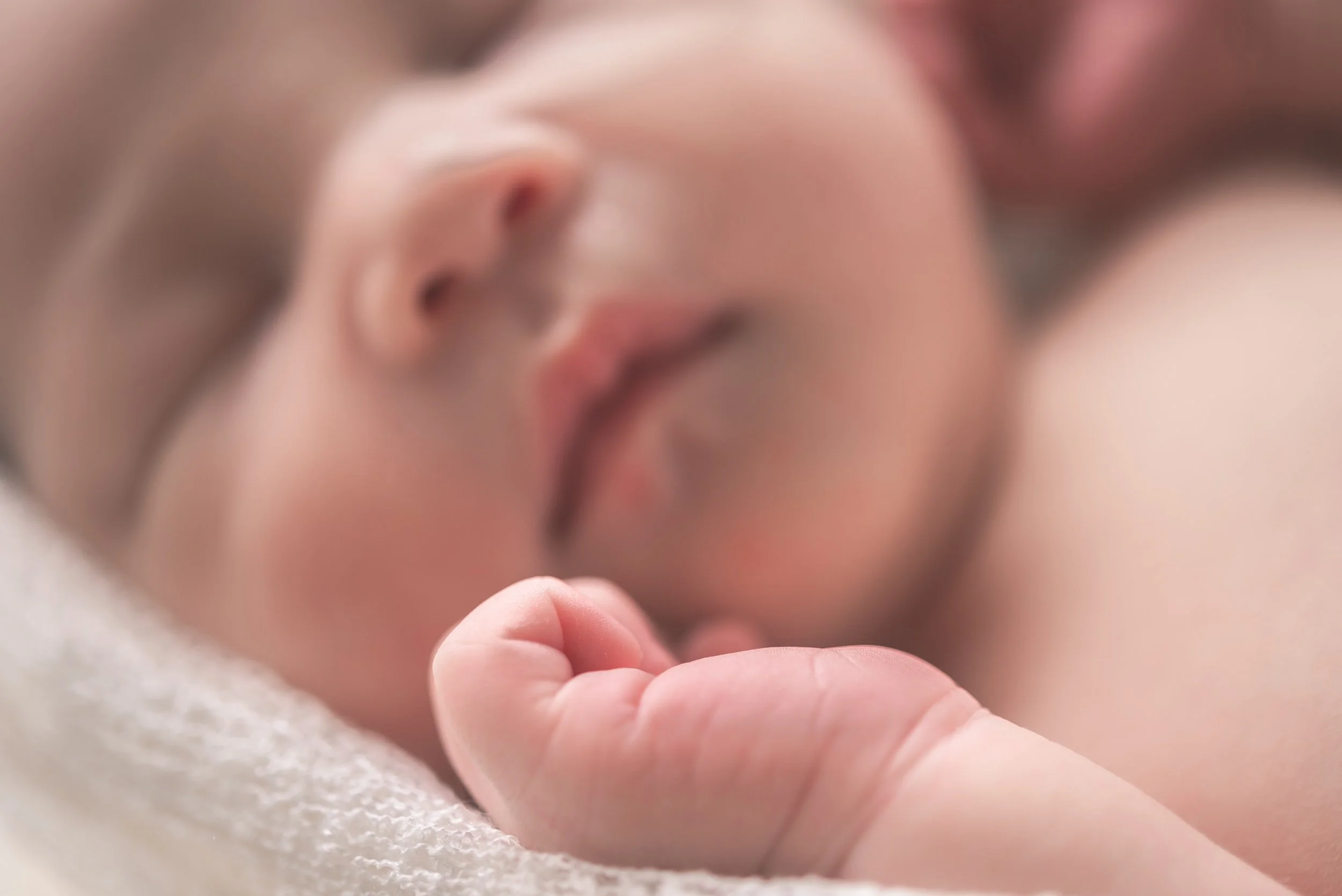The following is an analysis of Ireland’s abortions statistics, written by Jim Stack of Deise 4 Life.
The statistics presented here were compiled from (a)the 2019 and 2020 abortion reports from the Department of Health (b)replies to parliamentary questions (PQ’s) about abortion from the HSE (c) the 2019 report from the Irish Family Planning Association (IFPA), and(d) the ScienceDirect survey of START members (GP’s providing abortions) published in June 2021, but referring to the first six months of our new abortion regime.
All of the data presented here is already in the public domain, but none of it has received much attention in the mainstream media, and the public are largely unaware of it. It is hard to see how we can have a sensible review of our abortion legislation – a review that is scheduled for this year - without the public being informed of these basic facts. That is why this article has been written.
1. Abortions and abortion rates in 2019 and 2020
We report the Irish abortion numbers given in the official report – the known legal abortions carried out on Irish soil. There were nearly 600 additional abortions in England and Wales on Irish women in the two years, but these are excluded here for lack of additional information.
(a) We had 6666 abortions here in 2019, 6577 in 2020, a decrease of 1.3%.
(b) According to the Central Statistics Office, we had 59,796 births here in 2019 and 55,959 births in 2020, a decrease of 6.4%
(c) The abortion ratio (abortions per 1000 births) actually increased here by 5.5% between 2019 and 2020
(d) Abortions dropped off sharply here towards the end of 2020, almost certainly due to the effect of the Covid-19 restrictions on social gatherings. In the first quarter of 2020 (largely unaffected by Covid-19 restrictions) the abortion ratio was more than 30% higher than the first quarter of 2019. In total contrast, the Q4 ratio was 21.4% lower in 2020 compared with Q4 2019. The Q2 and Q3 ratios were 7.6% and 7.8% higher in 2020. Thus 2020 started off with massively higher abortion ratios compared with 2019, but this increase tapered off in the course of the year and turned into a large reduction in the abortion ratio in the final quarter.
The graph shows these variations in monthly/quarterly abortions in 2019 and 2020. In the early months of 2020 abortions were far higher than in 2019, in the final months the reverse is true.
(e) More than 98% of abortions in both years were classified in the official report as early-pregnancy abortions (by abortion pill, before 12 weeks gestation). So far as is known, therefore, in more than 98% of abortions, healthy babies of healthy mothers were aborted in both years.
2. Regional variation in abortion rates
There was large regional variation in abortion rates here in 2019, and again in 2020. Dublin, Louth and Waterford had the highest reported abortion rates in both years. Kerry, Monaghan and Roscommon had the lowest in 2019; Laois, Clare and Roscommon had the lowest in 2020. Twenty of the twenty-six counties had higher abortion ratios in 2020 than in 2019. In 2019 the county of residence information was not provided in 525 cases, and in 2020 this figure was 425. The figures quoted in the official reports for many counties are, therefore, underestimates.
As so little other data was collected, it is difficult to explain either the observed huge variations among the counties, or the large variation in a few counties from one year to the next. In other countries a lot more is known about the women who present for abortions – data is collected on their age, marital status, socioeconomic status, ethnicity, reasons for seeking abortion etc– but in Ireland in 2018 our legislators decided that this information was not required.
[Abortion rates per county are presented and discussed in more detail in Irish abortion figures by county in 2020 | The Iona Institute 6th July 2021]
3. Number of GP’s providing early abortions = 390 (up from 250 in January 2019). Number of maternity hospitals doing abortions = 10 (out of 19)
The information about GP’s comes from the organisation START (an organisation of GP’s who provide abortions here). Of note, there are just under 3500 GP’s practising in Ireland currently, according to the Irish College of General Practitioners, suggesting that 11% of GP’s are currently doing terminations here.
4. Numbers changing their minds about abortion = 870 (at least) in first year
In response to a parliamentary question in 2020, from Carol Nolan TD, the HSE said that 7,536 initial consultations for termination of pregnancy took place in 2019.
There were 6,666 abortions here in 2019 under the new legislation. Since 7536 – 6666 = 870, this suggests that 870 women in 2019 decided against abortion during the 3-day reflection period. If we use the figure of 6542 early abortions in 2019, instead of the total 6,666 (which includes surgical abortions), we obtain 7536-6542=994 lives saved in 2019 attributable to the 3-day reflection period. That is about 15% of the early abortions, or more than 1 in 7.
The 2019 annual report from the Irish Family Planning Association (IFPA) conveys a similar message. The IFPA sampled 177 of their clients in 2019 and 22 of these did not proceed beyond the initial consultation. That is 1 in 8 women in the IFPA sample who changed their minds. The ScienceDirect article (June 2021) also reports a 1 in 8 figure for the first 6 months of the new abortion regime.
The only sensible conclusion from these numbers is that the 3-day reflection period is doing the job it was designed to do, saving a considerable number of lives. It is beyond belief that anyone would campaign for its abolition.
5. Number of women experiencing serious health issues post medical abortions =300 approximately in first year
. Carol Nolan TD also submitted a PQ to the Health Minister about the number of admissions to hospital here following early stage abortions, but got an evasive reply.
The only real sources of information here appear to be the IFPA annual report for 2019, based on a sample of 177 of their clients in 2019, and the START report mentioned above. In the IFPA data, 8% were admitted to hospital after taking the abortion pills, which (extrapolated to all 6542 early abortions here in 2019, not just the abortions in the IFPA Report) means that well over 500 women here who took abortion pills ended up in hospital in 2019. About 4.5% of the IFPA cases (which would equate to about 300 women per year nationally) were considered serious enough to be detained in hospital.
The START figure for hospital referrals is almost identical to the IFPA figure: 7.9% of their clients were referred on to hospital in the first 6 months of the new regime.
6. Numbers relating to state financing: €20m for abortion providers in first two years, €0 for agencies helping pregnant women to keep their babies
The state paid €20 million to abortion providers in 2019–2020 (reply to PQ from Peadar Tóibín TD). Some of this money had been earmarked for improvement of maternity services, and was diverted instead to finance abortions. Over the same period, the state paid €0 to organisations such as Gianna Care and Every Life Counts which assist women to have their babies.
The payment system for GP’s providing abortions, and GP’s managing continuing pregnancies, is bizarre. The following information was put in the public domain by a Dublin-based GP, a member of the Medical Council, as far back as 2nd January 2019 in a letter to the Irish Independent – that is, right at the start of the new regime:
“ The fee to be paid to a doctor for a medical termination conducted over three to four visits is €450, whilst the fee paid for the management of a pregnancy over eight to ten visits is circa €250.This means that a GP is paid circa €110 per visit to terminate a pregnancy, whilst he/she is paid circa €25 per visit, to manage a pregnancy.”
Two and a half years later, that situation still persists.
7. Do we know anything at all about the women who sought abortions?
We know little or nothing from the 2019 official government report about women who sought abortions in 2019. The same applies to the 2020 official report, which is practically a carbon copy of the 2019 report. We have no official information at all about marital status, ethnicity, number of previous abortions, or economic status of these women. Neither do we know in how many cases coercion was involved. Other countries collect this type of data; we do not.
The information below is from the 2019 IFPA report and is based on a sample of just 177 of IFPA clients in that year:
There was a broad age range, but more than 50% were in their twenties
More than 68% had not used any form of contraception
49% were already mothers
94% were less than 10 weeks pregnant
The START survey has some similar data. Just 33% of their clients had been using contraception. 99% were within the 12-week gestational limit (including the 3-day waiting period). 55% already had children. 65% were over 25 years of age.
Conclusions
In the current review of our abortion regime, the following conclusions seem inescapable based on the above data:
(i) Women do change their minds about abortion, at least 1 in 8 of them in the first year of the new regime; the 3-day reflection period allows this to happen, and should be retained.
(ii) Abortion pills can cause health problems in women that are more serious, and more common, than is generally admitted; proposals to allow women to self-medicate seem, therefore, particularly ill-advised.
(iii) The existing payment system for GP’s is ridiculous, and needs to be replaced with a system that pays at least as much per visit for managing a pregnancy as for terminating a pregnancy.
(iv) Organisations that help women to have their babies should be funded by the state.
(v) All the evidence suggests that our abortion rate would have risen very sharply in 2020 had it not been for Covid-19 restrictions in the latter half of 2020. If we want to keep abortion numbers down, we need additional safeguards in the legislation.
(vi) We should follow the example of other countries and start collecting necessary basic data about women who seek abortions here.
Jim Stack, Deise 4 Life












Shocking.